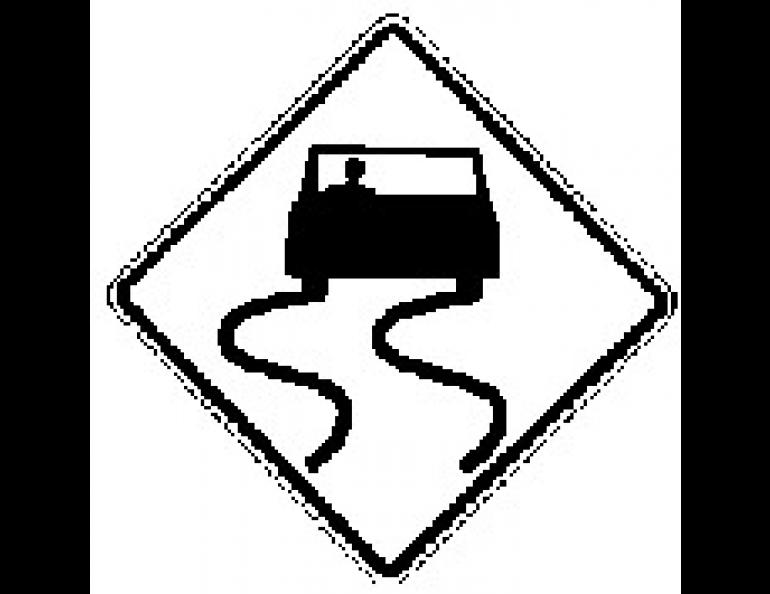
Three Kinds of Friction
You're driving along, your reflexes still set to summer, when the light changes. You hit the brakes, your wheels lock, and you skid merrily into the intersection. Or perhaps it's the turn you've been making all summer at 20, and your car suddenly decides to perform a Viennese waltz instead of going where you try to point it. Why do cars behave as they do when ice returns to the roads?
The reason we are able to control cars at all is because of friction between the car's tires and the road: more accurately, because there are three kinds of friction: rolling friction, starting friction, and sliding friction. Sliding friction between the wheels and the pavement is the villain of the piece, while total rolling friction and starting friction allow the car to be controlled. Both starting and sliding friction between wheel and road are greatly reduced by ice. Within the brakes, however, starting friction causes the problem.
The easiest way to understand the three frictions is to take a smooth board, a wooden block, and a marble. Place the wooden block and the marble on the board while it is level, and then gently raise one end of the board. The marble will begin moving almost immediately, demonstrating that its rolling friction is very low. The difference in height between the two ends of the board will have to be considerably greater before the block begins to move. Once you have determined how large an angle it takes to start the block sliding, raise the end of the board to that point, then, after the block has started to slide, lower the high end of the board slightly. The block will continue to slide, because sliding friction, the friction between two surfaces that are moving relative to each other, is always less than starting friction, the friction that must be overcome to start motion.
Applying this to a car on ice takes one more definition: the effective rolling friction of a car's wheels involves not only the rolling friction of the wheel itself, but also the various sliding and rolling frictions of the brakes and bearings. For a car to start moving, the engine must apply enough force to overcome the internal friction of the transmission and bearings and start the wheels turning, but it must do so without letting the wheels apply so much force to the road that they overcome the starting friction of the wheels on the road and start spinning.
When you step on the brakes, you are increasing the effective rolling friction of the wheels. If this effective rolling friction increases until it is greater than the starting friction, unpleasant things happen: as starting friction between the pavement and the wheels changes to sliding friction, which is always less than starting friction, the wheels begin to slide on the pavement. At the same time, sliding friction between the brake shoes and the wheel becomes starting friction, and the brakes lock up . If you let up on the brake pedal enough to return to sliding friction in the brakes, and make the effective rolling friction less than the sliding friction between wheels and pavement, and do so while the car is still skidding in a straight line, the transition back to rolling friction -- and control -- will normally occur smoothly. This is why pumping the brakes is recommended for stopping a car on ice.
If you turn the front wheels of a moving car, the momentum of the car produces a sideways force on the rolling wheel, the amount of the force depending both on the speed of the car and the amount by which the wheels are turned. If this force exceeds what the starting friction of the wheels on the pavement is able to counter, the wheels will begin to slide, exerting only the force allowed by sliding friction -- not much, if the road is icy!
Again, the recovery (if possible) is based on getting the wheels back to a condition of rolling friction forward with starting friction sidewise. The best chance for this is to turn the front wheels in the direction the car as a whole is moving while keeping your feet away from the brakes. If the car is spinning slowly while it moves, the front end will be turning away from the direction the car as a whole is moving, hence the usual rule of steering in the direction the rear wheels are skidding.





